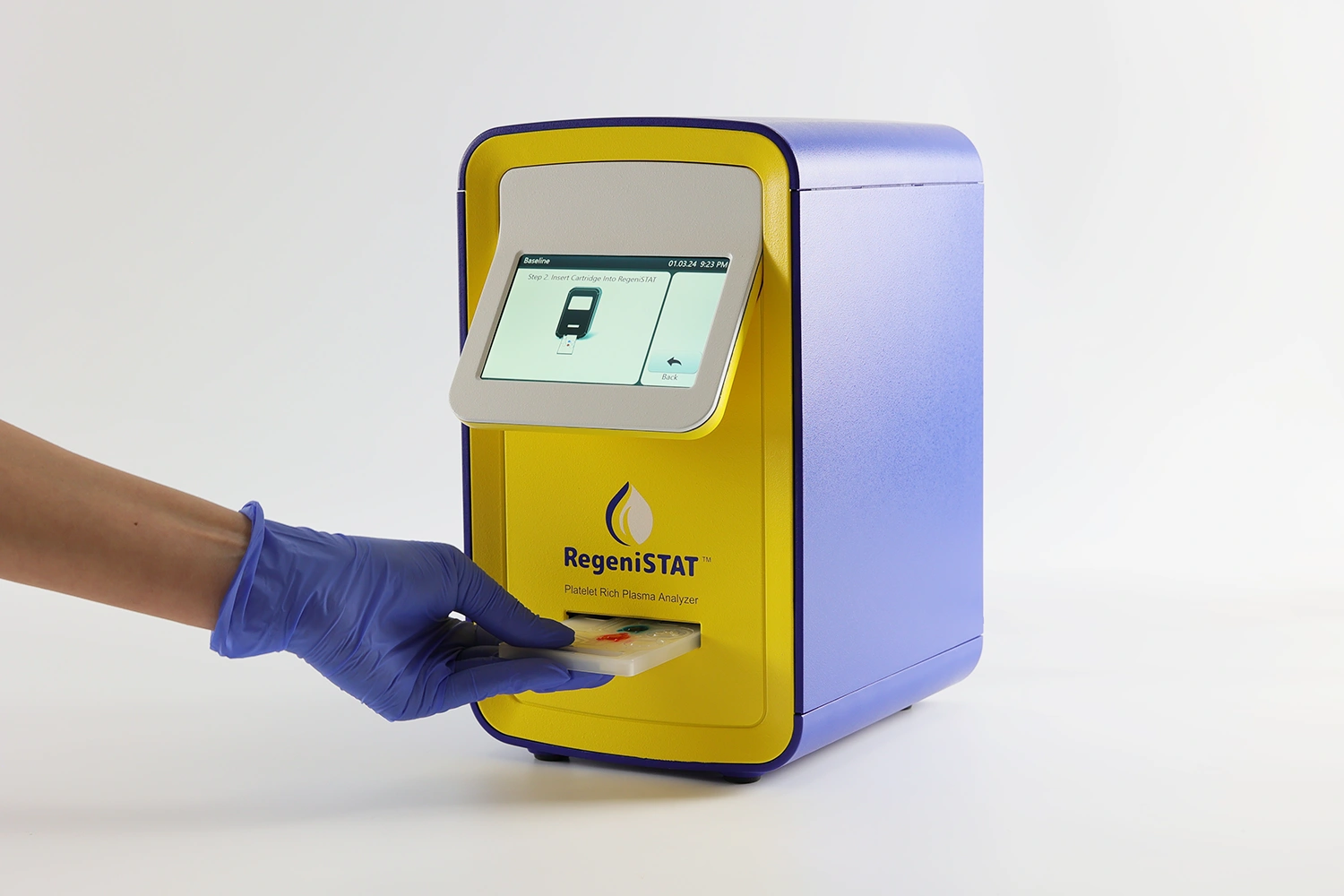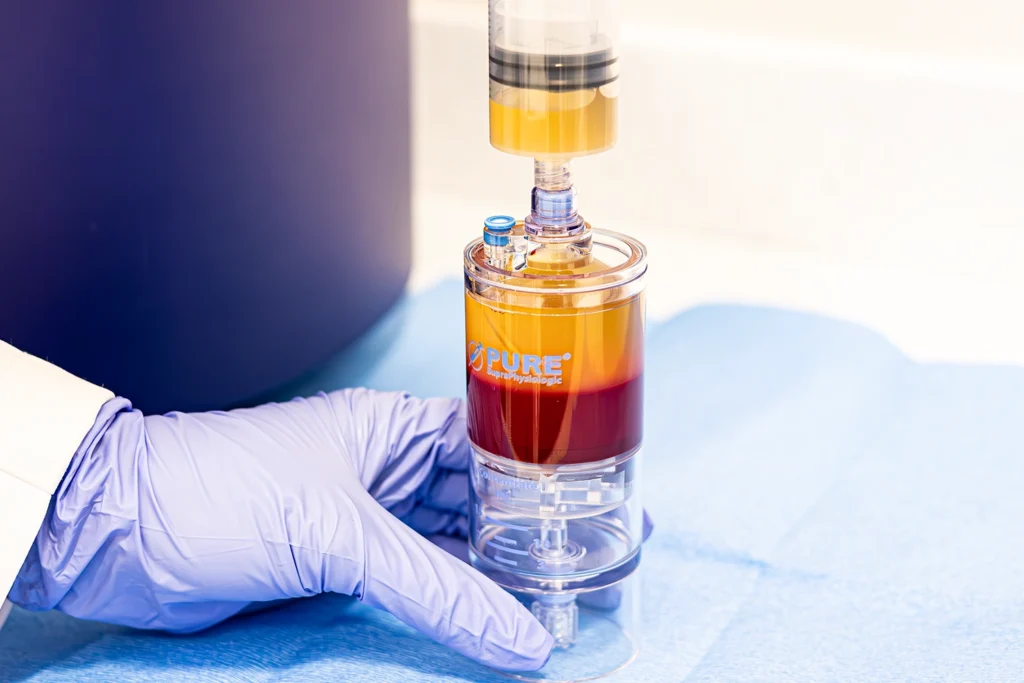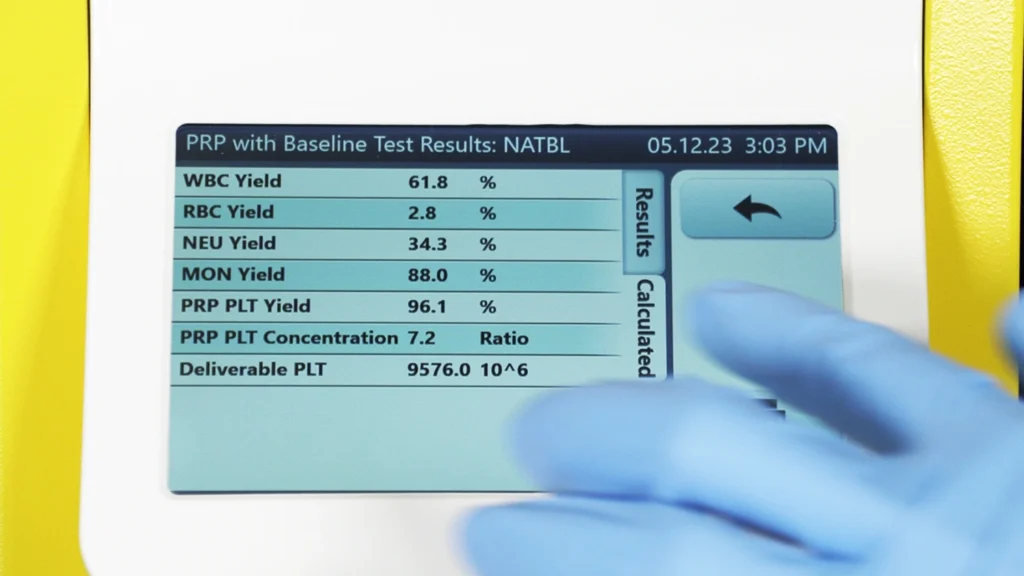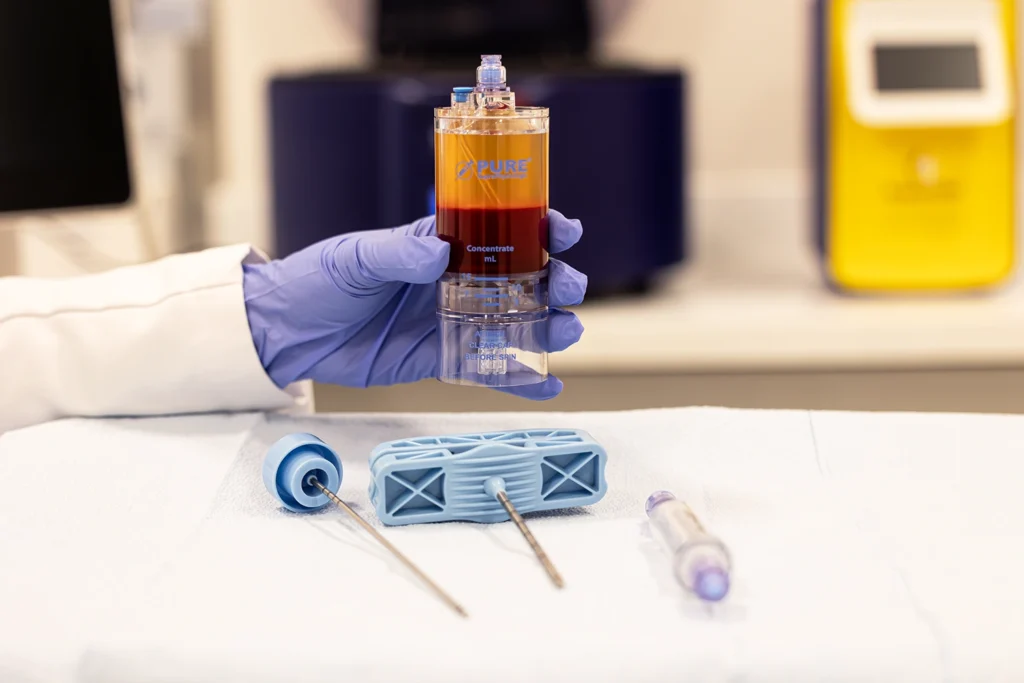
When it comes to achieving consistent, high-quality results with Platelet-Rich Plasma (PRP) therapy, every step of the preparation process matters, starting with how much blood you draw. While many providers focus on the final PRP volume or concentration, the volume of blood collected at the start plays a critical role in determining the effectiveness of the treatment.
That’s because your ability to produce a therapeutic dose of PRP one that’s rich in growth factors and platelets depends directly on how many platelets you have to begin with. And the more blood you draw, the more platelets you can concentrate.
In this post, we’ll explain why the volume of blood drawn is one of the most important (and often overlooked) variables in PRP therapy, how it impacts the concentration factor, and how to calculate the right amount for your specific treatments.
In PRP therapy, the volume of blood drawn refers to the total amount of a patient’s whole blood collected before processing it in a centrifuge. This initial sample contains red blood cells, white blood cells, plasma, and most importantly platelets.
During processing, the centrifuge separates the blood into layers, allowing the provider to isolate and collect the platelet-rich layer. The goal is to concentrate the platelets into a smaller volume of plasma, creating a final product that is rich in growth factors and biologically active components that support healing and regeneration.
But here’s the key: you can’t concentrate what you don’t have enough of. If the starting volume is too small, there simply aren’t enough platelets available to create a high-quality PRP product no matter how efficient your system is.
That’s why understanding and planning for the right blood volume is essential. It ensures you have enough platelets to reach therapeutic concentration levels and deliver meaningful results to your patients.

The volume of blood drawn directly impacts how many total platelets are available for concentration making it one of the most important variables in PRP preparation.
Let’s break it down:
Each milliliter of whole blood contains a baseline number of platelets, typically around 250,000 platelets per microliter (µL) in a healthy adult.
When you draw a larger volume of blood, you’re collecting a greater total number of platelets.
After centrifugation, those platelets are concentrated into a smaller final PRP volume, which increases the platelet concentration per microliter what we refer to as the concentration factor.
For example, drawing 60 mL of blood and reducing it to 6 mL of PRP while retaining 90% of the platelets can yield a PRP product that is 5–7× more concentrated than the patient’s baseline. This higher concentration delivers more growth factors to the treatment site, which can enhance outcomes in tissue repair, collagen stimulation, and inflammation reduction.
In contrast, drawing a small amount of blood limits the total platelet pool and results in a lower concentration, even if your system is highly efficient. You might still call it “PRP,” but it won’t deliver the same therapeutic potency.
Bottom line: More blood = more platelets = more powerful PRP. The math doesn’t lie, and understanding this relationship is key to consistent, results-driven treatments.
Multiple peer-reviewed studies highlight the impact of blood draw volume on PRP composition and platelet yield:
Dashore et al. (2021) summarized protocols using double-spin methods with blood volumes ranging from 3.5 to 10 mL per tube, emphasizing standardized centrifugation processes in that range.
PMC Article
Dhurat and Sukesh (2014) reviewed that most PRP systems operate between 20 and 60 mL of whole blood, with yields varying by device and technique.
PMC Article
Corsini et al. (2025) found that platelet dose per injection is strongly influenced by starting blood volume; lower volumes tend to produce fewer total platelets despite high concentration factors.
MDPI Journal
De Matthaeis et al. (2024) reported real-world data from 212 patients receiving PRP prepared from roughly 20 mL of blood, yielding about 4 billion platelets in 4 mL of PRP with an average 82% recovery rate.
MDPI Journal
Piao et al. (2017) developed a model showing that larger whole blood volumes correlate with improved platelet recovery under optimized centrifugation settings.
PLOS ONE
When preparing PRP, starting with too small a volume of blood can compromise the overall quality and utility of the final product. While there’s no universally “right” volume for every case, scientific literature and lab-based data consistently show that lower blood draw volumes present several challenges:
Even if the PRP is concentrated, a smaller blood volume contains fewer total platelets to begin with. This can result in a final PRP sample with a lower absolute number of platelets, which may limit the availability of key growth factors. According to Corsini et al. (2025), platelet dose not just concentration plays a significant role in determining the biological potential of PRP (MDPI).
Smaller blood samples are more sensitive to patient variability. A minor drop in baseline platelet count or a small error in processing can have a larger impact when starting with limited volume. This makes it harder to standardize protocols or ensure consistency from one patient to the next.
Depending on the intended use, you may not produce enough PRP to cover the target area or perform multiple passes/injections. For example, De Matthaeis et al. (2024) used ~20 mL of blood to reliably produce ~4 mL of PRP per session suggesting that lower volumes may not meet minimum application requirements (MDPI).
When limited by low PRP yield, providers have fewer options to adjust volume or concentration for specific protocols. This restricts the ability to tailor treatments based on patient needs or practitioner preferences.
While efficiency matters, there’s a limit to how much you can extract from a small input. Drawing too little blood increases the risk of delivering a low-dose product, even if the concentration looks adequate on paper. A well-chosen blood volume supports consistency, customization, and confidence in your PRP preparation process.

Because PRP quality depends on multiple variables like the volume of blood drawn, platelet recovery rate, and the patient’s baseline count it can be difficult to estimate PRP concentration without doing the math. That’s where a Platelet Concentration Calculator becomes an essential tool.
At PRP Labs, we offer a free calculator that allows you to estimate the total platelets, concentration per microliter, and concentration factor in your PRP sample using just a few inputs.
To calculate your PRP’s estimated concentration, enter the following:

The volume of blood drawn is a fundamental factor that influences the quality and consistency of your PRP preparation. It determines the total number of platelets available for concentration, which, combined with your processing method, ultimately affects the platelet concentration in the final PRP product.
Starting with an adequate blood volume ensures you have enough platelets to achieve your target concentration.
Insufficient blood volume can limit both the total platelet count and the final PRP volume, impacting your ability to deliver a consistent product.
Using tools like a platelet concentration calculator helps standardize your process and provides clarity on how blood volume, recovery rate, and baseline counts interact.
Aligning your blood draw volume with your treatment goals and protocols supports consistency and confidence in your PRP results.
By paying attention to this often-overlooked variable, you set the stage for more reliable PRP preparation helping you offer quality treatments your patients and practice can depend on.
Ready to optimize your PRP treatments with precise control over blood volume and platelet concentration?
Use our free PRP Platelet Concentration Calculator to standardize your preparation and ensure you’re delivering consistent, high-quality PRP every time.
Have questions or want personalized guidance on the right blood draw volume and PRP system for your practice?
Speak with a PRP Specialist today! We’re here to help you select the best protocols and equipment to meet your clinical goals.


Dashore, R. S., & Dashore, A. (2021). Platelet-Rich Plasma: Preparation, Composition, and Application in Various Medical Fields. Journal of Clinical Orthopaedics and Trauma, 12(3), 412–418.
https://www.ncbi.nlm.nih.gov/pmc/articles/PMC8664176/
Dhurat, R., & Sukesh, M. S. (2014). Principles and Methods of Preparation of Platelet-Rich Plasma: A Review and Author’s Perspective. Journal of Cutaneous and Aesthetic Surgery, 7(4), 189–197.
https://www.ncbi.nlm.nih.gov/pmc/articles/PMC4338460/
Corsini, E. M., Sala, A., Malchiodi, L., Cattaneo, C., & Manunta, A. (2025). Platelet Dose and Its Role in Platelet-Rich Plasma Therapy: A Systematic Review. Journal of Clinical Medicine, 14(8), 2714.
https://www.mdpi.com/2077-0383/14/8/2714
De Matthaeis, A., Marino, G., Marcacci, M., & D’Ascenzo, S. (2024). Quantitative Assessment of Platelets in Platelet-Rich Plasma for Orthopedic Applications. Journal of Clinical Medicine, 13(16), 4816.
https://www.mdpi.com/2077-0383/13/16/4816
Piao, Y., Gong, M., Li, H., Zhang, X., & Zhao, H. (2017). Modeling Platelet Recovery in Platelet-Rich Plasma Preparation: Influence of Blood Volume and Centrifugation Parameters. PLoS ONE, 12(1), e0187509.
https://journals.plos.org/plosone/article?id=10.1371/journal.pone.0187509

Daniel Zengel, an executive with over 10 years of experience in the pharmaceutical and medical device space, is dedicated to delivering industry-leading, cost-effective products to US-based medical providers. Specializing in regenerative medicine, Daniel focuses on sales, training, and marketing support to help clinics across the country successfully implement platelet-rich plasma (PRP) therapy.